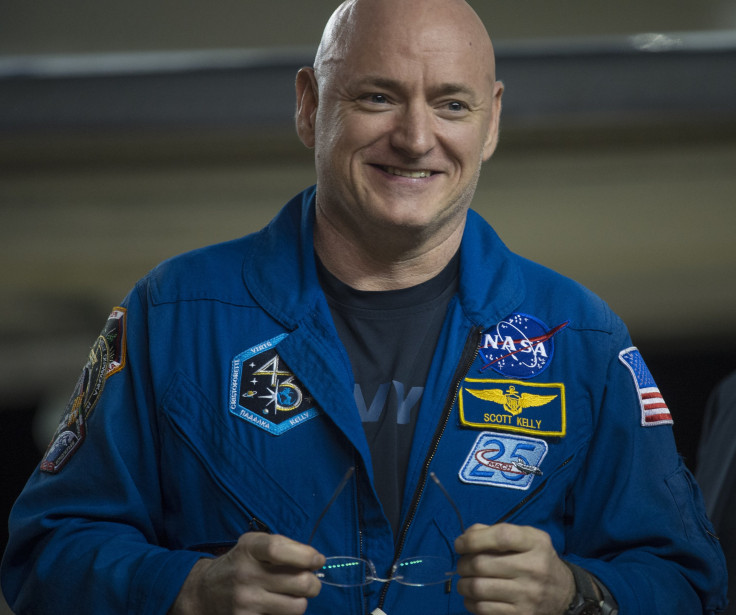A Year In Space For Scott Kelly Was Just The Beginning Of His Mission

A slightly taller and fractionally younger Scott Kelly may be back on Earth after 340 days aboard the International Space Station, but the science experiments for the NASA astronaut are far from over.
Kelly, who gained 2 inches in height and shaved 0.01 second from his age, described the year in space as an eternity in a press conference Friday. “I tried to have milestones that were close,” said Kelly in describing how he handled the mission. “ ‘When is the next crew arriving?’ ‘When is the next visiting vehicle arriving?’ The next EVA, the next robotics, the next big science activity and I think that made a difference for me and my sanity.”
Great to be back on #Earth. There's no place like #home! Taking the plunge after my #Houston arrival. #YearInSpacehttps://t.co/NhyLTbqcxS
— Scott Kelly (@StationCDRKelly) March 3, 2016
Based on his previous spaceflight experience, Kelly said he was experiencing more muscle soreness and fatigue after the latest mission. The astronaut also said his skin was really sensitive, describing the feeling as a “burning” sensation.
Much has been made of the effects of microgravity on the human body, but the more than 450 investigations aboard the space station covered a broad range of science, said Julie Robinson, International Space Station program chief scientist. “There were life science investigations with stem cells, worms and other kinds of organisms helping us learn the mechanisms of how life responds to space,” Robinson said Friday during a subsequent press conference. “There were physical science investigations with fuels burning in a controlled environment.”
Welcome back to _, @StationCDRKelly! #YearInSpace _https://t.co/L3CLnKgaCS
— The White House (@WhiteHouse) March 4, 2016
Other experiments explored the technologies that could be used in future missions such as automatic docking procedures or new life support systems. The space station is also home to a dark matter experiment and the RapidScat instrument used to monitor hurricanes.
NASA was not the only space agency to design studies on the human body for Kelly, said John Charles, Human Research Program associate manager for international science. There were two investigations from Russia and two from Japan.
Do really drop things when gravity comes back in the picture? #YearInSpace https://t.co/0Pr5m1tfsx https://t.co/fH7r5IrBrc
— Intl. Space Station (@Space_Station) March 4, 2016
Charles highlighted two if the inquiries: the fluid shift study and the field test conducted after Kelly arrived on Earth. The fluid shifts investigation was conducted in partnership with Roscosmos to determine the effects of body fluid shifting upward on eyesight. The increased pressure from the fluid is hypothesized to be responsible for the visual impairment reported by astronauts. The experiment required medical equipment from the American side of the space station to be moved to the Russian section.
Kelly and one-year crewmate Mikhail Kornienko participated in a field test after they landed that mimicked conditions an astronaut would face after landing on Mars, Charles said. Researchers evaluated how the astronauts walked, recovered from a fall, stood up and lifted objects after 340 days in space. Kelly’s cognitive ability was also tested, and nearly a half liter of blood was taken from Kelly during his time in space, Charles said.
Mark Kelly, Scott’s identical twin brother, was a key participant to the mission despite never leaving Earth. The retired astronaut described his role as a control subject while his brother was in space. He has spent several hours in MRI machines and undergone his own series of blood draws and tests.
Kelly will continue to participate in experiments in the next year. Despite the busy schedule, he has had the opportunity to take a dip in his pool and have a family dinner, two things he said he wanted to do as soon as he got back to Earth.
© Copyright IBTimes 2025. All rights reserved.




















